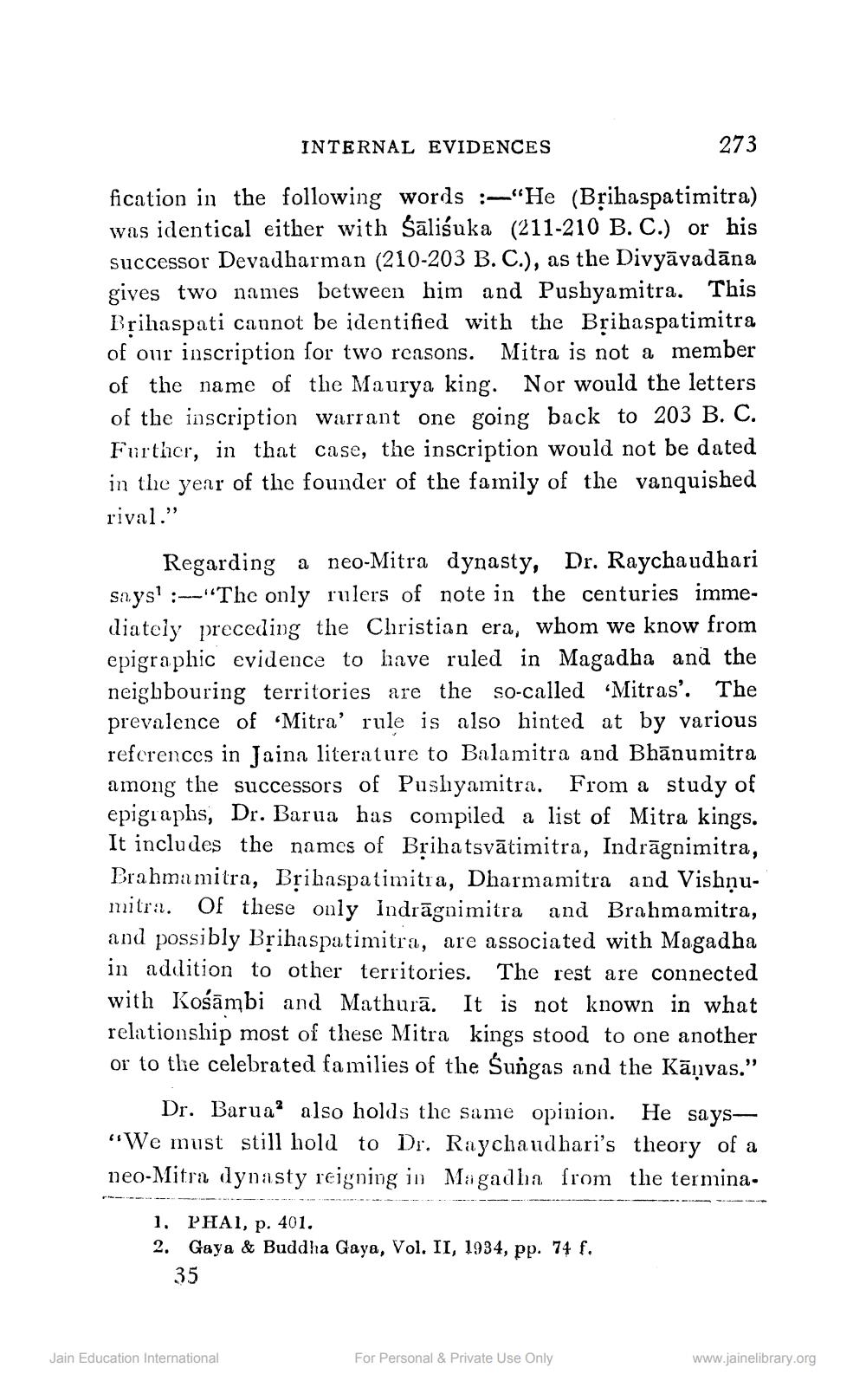________________
INTERNAL EVIDENCES
273
fication in the following words :-"He (Brihaspatimitra) was identical either with śāliśuka (211-210 B. C.) or his successor Devadharman (210-203 B. C.), as the Divyāvadāna gives two names between him and Pushyamitra. This Brihaspati cannot be identified with the Bșihaspatimitra of our inscription for two reasons. Mitra is not a member of the name of the Maurya king. Nor would the letters of the inscription warrant one going back to 203 B. C. Further, in that case, the inscription would not be dated in the year of the founder of the family of the vanquished rival."
Regarding a neo-Mitra dynasty, Dr. Raychaudhari says! :-"The only rulers of note in the centuries immediately preceding the Christian era, whom we know from epigraphic evidence to have ruled in Magadha and the neighbouring territories are the so-called “Mitras'. The prevalence of Mitra' rule is also hinted at by various references in Jaina literature to Balamitra and Bhānumitra among the successors of Pushiyamnitra. From a study of epigraphis, Dr. Barua has compiled a list of Mitra kings. It includes the names of Brihatsvātimitra, Indrāgnimitra, Brahma mitra, Bșihaspatimitia, Dharmamitra and Vishņumitral. Of these only Indrāgnimitra and Brahmamitra, and possibly Brihaspatimitra, are associated with Magadha in addition to other territories. The rest are connected with Kośāmbi and Mathurā. It is not known in what relationship most of these Mitra kings stood to one another or to the celebrated families of the Sungas and the Kāņvas."
Dr. Barua? also holds the same opinion. He says"We must still hold to Dr. Raychaudhari's theory of a neo-Mitra dynasty reigning in Magadha from the termina.
1. PHA1, p. 401. 2. Gaya & Buddha Gaya, Vol. II, 1934, pp. 74 f.
35
Jain Education International
For Personal & Private Use Only
www.jainelibrary.org




